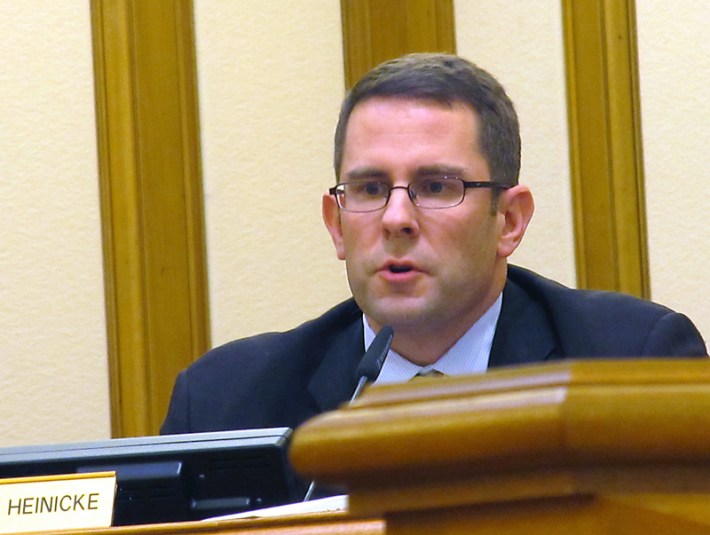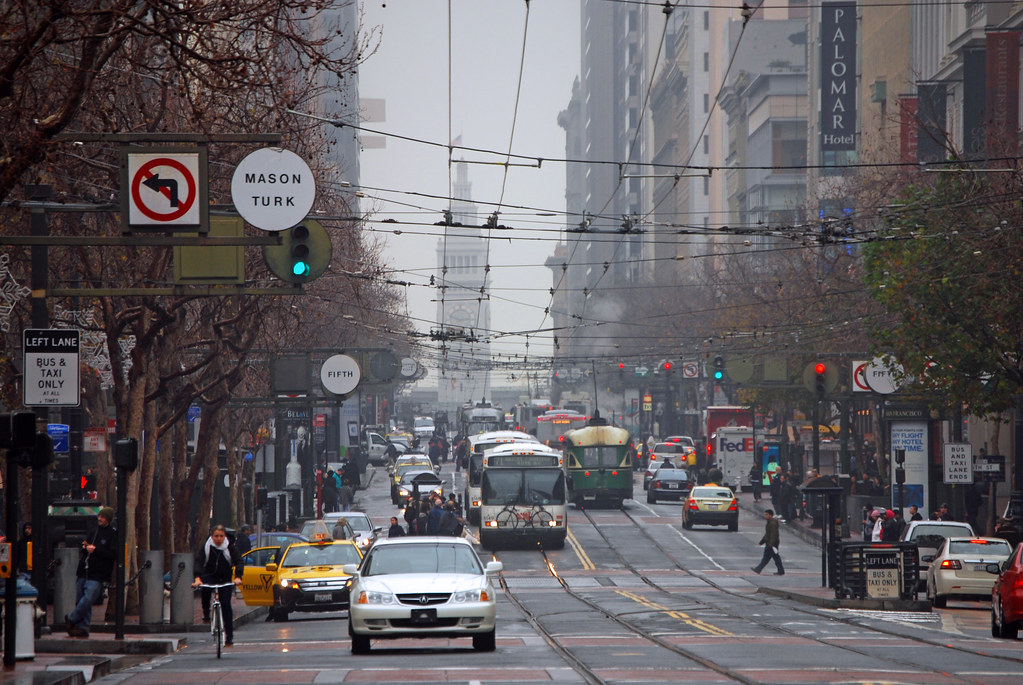SFMTA Director Heinicke: Let’s Get Cracking on Car-Free Market Street
4:04 PM PST on February 1, 2013
The campaign to rid lower Market Street of the delays and dangers caused by personal cars has an unexpected champion on the SF Municipal Transportation Agency Board of Directors.
At an SFMTA board meeting this Tuesday -- the same meeting where agency staff presented a new Strategic Plan, which includes the Bicycle and Pedestrian Strategies -- board member Malcolm Heinicke called for banning private cars from Market ahead of the completion of the Better Market Street project.

"With all of this information coming forward, all of these plans coming forward, and the desire to look at the next big thing at the same time we're getting the Central Subway done, and getting BRTs done, I think it's really time to come back to this board with a concrete proposal as to how we will go about assessing the closure of Market Street, how and whether we can best do it, and how to fund it," said Heinicke.
Heinicke made the case that the need to speed up Muni and increase safety for pedestrians and bicycle riders on Market is too urgent to put it off. "I think the time is now," he said. "I think we've seen enough data on the various modes and the impacts. I think there's been enough discussion of what we can do on the alternate arteries."
Calls for a car-free Market have recently come from city officials including Board of Supervisors President David Chiu. But while it wouldn't necessarily be surprising to see leadership on the issue from Chiu or other known livable streets advocates, like SFMTA board members Cheryl Brinkman and Joél Ramos, the strong words from Heinicke -- a lawyer known for his tenure on the former Taxi Commission -- are a promising sign that a car-free Market has broader political support.
Heinicke did note that he has a "personal interest" in the idea beyond the boon for walking, biking, and transit, possibly alluding to the fact that the ban probably wouldn't apply to taxis. But he emphasized that he sees "this coming together, not just as a bike and pedestrian proposal, but as a real civic proposal."
"If we had the elimination of private cars on Market Street, that would expedite the many, many transit lines that use it as their final point as of getting downtown," he said. "I think we can really have a civic plan... that our city can really be proud of, and really build something fantastic if we did that."
Getting cars off lower Market has become increasingly popular since the SFMTA instituted traffic diversions in 2009 requiring eastbound drivers to turn right at 6th and 10th Streets, leading to increased Muni speeds and better conditions for walking and biking. Despite the success, the growing calls for more auto restrictions on Market have yet to lead to more changes.
A car-free option is expected to be proposed this summer as part of the Better Market Street project, but that plan is set to be implemented no sooner than 2015. Project planners expect to begin environmental review of the options later this year.
While the path to a car-free Market ahead of the street's reconstruction is still sketchy, it's Mayor Ed Lee who oversees SFMTA appointments, and former Mayor Gavin Newsom instituted the trial project to test forced right turns. But when the Board of Supervisors approved a resolution urging more car restrictions on Market in September 2011, Lee skirted the issue in a discussion with the board, and it's unclear if he's willing to use his political muscle to expedite the process to make the city's main thoroughfare more livable.
In response to Heinicke, SFMTA Director of Transportation Ed Reiskin didn't indicate whether the agency had the ability to institute a ban ahead of Better Market Street, but said that planners from the various agencies managing the project could discuss it with the board within two to three months. "It's certainly fair game for the board to provide some policy direction or guidance to feed into the environmental process," said Reiskin.
Referring to the estimated 26 development projects under construction in the downtown area, Heinicke said downtown growth provides a major impetus for the measure to move forward. "Those 26 cranes are all within eyeshot of Market Street. It's time to create a corridor that really serves the east-west needs of a growing" area, he said.
Read More:
Stay in touch
Sign up for our free newsletter




